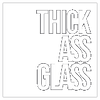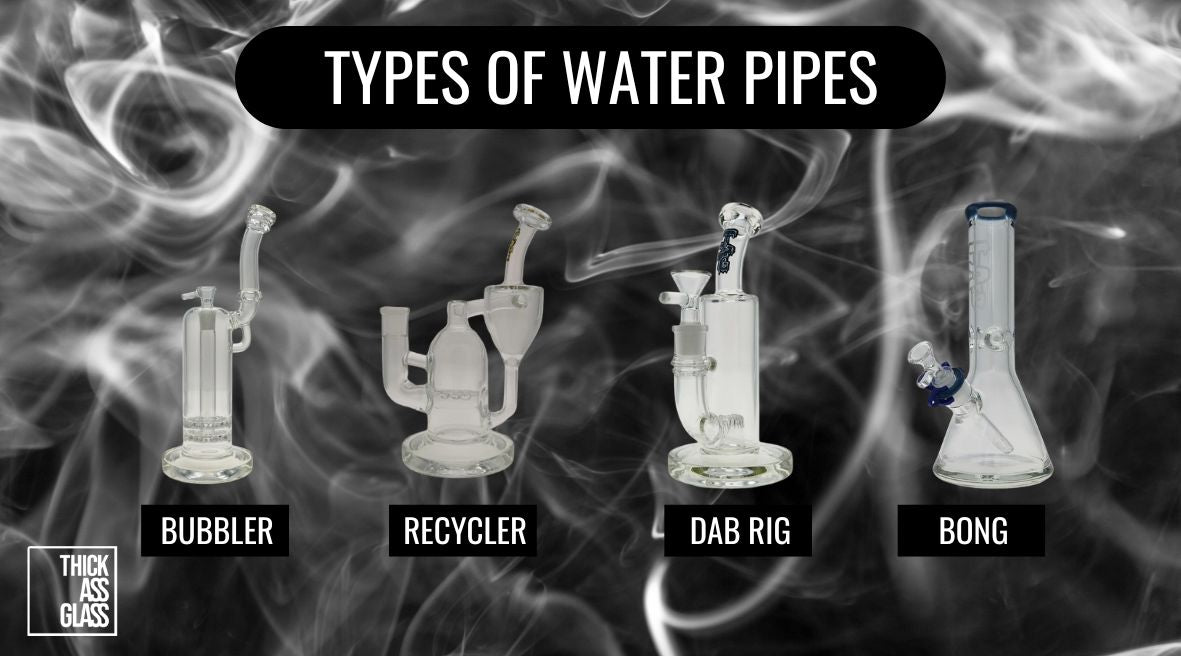Most people think bong shape is just about aesthetics, tall, short, fat, skinny, whatever looks cool on the shelf. But that’s the kind of thinking that gets you a harsh hit, poor airflow, or a gurgling mess that never clears right.
I’ve spent years obsessing over how a bong should function, and I can tell you: shape changes everything.
A straight tube clears like a piston, fast and aggressive.
A beaker offers water volume and smoothness but adds drag.
Recyclers? That’s where you get ultra-smooth, flavor-packed pulls, if they’re designed right. Even the angle of the neck or base thickness matters.
Still, I hear the same thing all the time: “Does bong shape really make a difference?” Yeah, it does.
Whether you’re brand new or have dozens of pieces, knowing how shape impacts your session will save you money, frustration, and frankly, lungs.
Straight Tube Bongs: Clean, Quick, and Direct
Straight tubes are the no-nonsense, get-it-done workhorses of the bong world.
Picture a narrow vertical cylinder, no extra chambers, no curves, just straight-line airflow from bowl to brain. That simplicity is the whole point.
The smoke doesn’t meander; it barrels. You’re not swirling through a maze of percs, you’re pulling fast, clean, and hard. For someone who wants instant payoff, no prep, no ceremony, this shape hits the mark.
It’s also a dream to clean: no hidden corners, no awkward brush angles, just rinse and done.
Now, there’s a reason straight tubes are often the first bong someone buys and the one seasoned smokers keep around. They’re ideal for microdosing or short sessions because they clear in a breath.
But here’s where people get tripped up: taller straight tubes can create more drag, especially if paired with a long downstem or narrow neck. That extra length adds resistance, which can feel harsher if your lungs aren’t ready.
So while they hit fast, they don’t always hit soft. If you’re after quick hits without fluff, a well-built straight tube with optimized airflow, like this TAG 18 inch piece, is as close to precision as it gets.
Beaker Bongs: The Classic for Smooth, Stable Hits
Beaker bongs are the quiet professionals, reliable, balanced, and designed to smooth out the chaos.
That wide, flared base holds more water, which means better filtration and cooler smoke. For anyone who wants to avoid coughing fits or throat burn, this shape is where comfort lives.
The extra volume also makes beakers naturally more stable, less likely to tip, even during clumsy sessions or group use. If you’ve ever knocked over a thin tube mid-rip, you’ll understand the value of a base that feels like it’s bolted to the table.
Now, if you’ve ever wondered, “Why does my beaker chug more than a straight tube?”, the answer is physics. More water = more resistance.
But that drag also means more diffusion. The hit travels longer, filters harder, and delivers a smoother result. Some claim it mutes flavor or feels “slower,” but that’s the tradeoff for comfort.
Personally, I’ll take a dense, cooled draw over a sharp one any day. Especially when you’re working with a real beaker, for example this 15’’ bong with a thick base, that’s not just stability, it’s structural armor.
Recyclers & Incyclers: For the Flavor-Focused Smoker
Recyclers and incyclers are where glass engineering meets performance art.
Unlike standard bongs that move smoke in a straight shot, these designs continuously cycle water and smoke through tight, deliberate channels. That looping motion doesn’t just look hypnotic, it actively scrubs heat and harshness from the hit.
The result? Smoother, cooler draws that preserve delicate flavors, especially in terpene-rich strains or concentrates.
For anyone chasing flavor over brute force, this is your shape. Small recycler chambers minimize air exposure, meaning less terpene loss. You’re not just tasting smoke, you’re tasting the plant.
They also come with a visual bonus: that “bubble stacking” effect as water rolls and froths through percs and tubes like a liquid tornado. It's mesmerizing, but not just for show.
That motion is doing real work, removing heat, refreshing the hit, and eliminating the stale drag you get from traditional chambers. Recyclers aren't just for connoisseurs, but if you're someone who values nuance over volume, they might feel like they were built just for you.
Bubblers: Compact Powerhouses
Bubblers are the middle ground between dry pipes and full-sized bongs, small enough to stash in a backpack, but with just enough water filtration to keep your throat from catching fire.
Think of them as the Swiss Army knives of glass. Compact, nimble, and purpose-built for portability, they combine the convenience of a hand pipe with the cooling effect of a water chamber.
They’re perfect for those moments when you want a smoother hit but don’t feel like breaking out your full setup. Whether you’re traveling, hiking, or just trying to stay discreet, a bubbler steps in where bulkier glass can’t.
The hits aren’t as diffused or filtered as what you'd get from a beaker or recycler, but they’re leagues ahead of a dry pipe in terms of comfort.
One thing I always tell customers: go for a bubbler with a fixed stem.
Moving parts don’t mix well with backpacks and car gloveboxes. A fixed-stem design keeps things simple and durable, especially when you’re on the move. It won’t deliver the cleanest rip of your life, but for on-the-go use? It’s unbeatable.
Percolator Shapes: The Engine Inside Your Bong
Percolators are the unsung heroes of smooth glass. They live inside your bong, not always visible, but always critical.
Their job?
Break your smoke into a thousand tiny bubbles so it can mingle with water, lose heat, and shed harshness. But percs are built many different ways, and how they’re shaped makes a massive difference in both performance and upkeep.
-
Tree percs are the high-efficiency filters. Multiple arms split your hit into fine streams, offering maximum diffusion. But here’s the trade-off: they’re notorious for being tough to clean. If you hate scrubbing tiny corners or dealing with buildup, keep that in mind.
-
Honeycomb percs, on the other hand, are sleek and efficient. A flat disc with dozens of precision-cut holes gives you a smooth, low-drag pull with minimal effort. They’re easier to maintain and less prone to clogging, especially in medium-sized bongs.
-
Inline percs work best in stemless designs. These horizontal percs generate tons of bubbles without stacking height. They’re fast, direct, and visually satisfying.
Matrix, umbrella, and fritted discs all have their niche, but they lean more toward heavy filtration, and heavier cleanup. It’s tempting to chase bigger stacks of percs thinking more equals better. It doesn’t. More percs can mean more drag, more water, and more hassle.
Someone once asked me, “Which shape minimizes resin buildup?” Easy: stick with simpler percs that can be removed or rinsed directly. A smart design doesn’t just hit better, it’s built to last. Choose the right engine, and the ride’s a lot smoother.
Height & Size: Does It Change the Experience?
Size matters, but not always the way people think.
A short bong under 10 inches might seem convenient, especially if you’re looking for something low-profile or travel-friendly. But with compact size comes compromise: less space for water, less distance for the smoke to cool, and less room for percs.
The result? Hits that feel sharper, hotter, and more direct. Good for quick sessions, not so great for comfort.
Step into the 10–16 inch range and you’re in the sweet spot.
This is where airflow meets control. You get enough volume for smooth diffusion without turning your bong into a countertop centerpiece. These mid-sized pieces handle percolators well, accommodate ice catchers, and still clean up without a headache.
If you’re looking for a reliable daily driver, this is where you plant your flag.
Go beyond 18 inches and you enter performance territory, massive hits, long draws, and ultra-cool smoke. But handling and maintenance become real factors.
You’ll need more lung power, more sink space, and more patience.
Now, let’s clear up a common myth: “Do smaller beakers hit harsher than straight tubes?” Absolutely.
Beakers rely on water volume to diffuse. Shrink that volume, and you’re left with drag but not much filtration. A short straight tube, though harsh, often clears faster and cleaner. Shape and size always work together, and when they’re mismatched, your lungs notice.
Bent Neck, Joint Angles, and Ergonomics
Bent necks might look like a stylistic flourish, but they’re one of the smartest functional tweaks in bong design. By angling the mouthpiece away from the bowl, you protect your face from open flame and rising heat, especially on tall pieces.
More importantly, a bent neck makes seated hits far more natural. You’re not leaning over the table or contorting to find a clean pull. It just fits.
Then there’s joint angle.
It’s easy to overlook, but the position of your joint affects everything from how your bowl sits to whether your ice catcher actually catches ice.
A 45° joint tilts your bowl slightly outward, great for angled downstems and recyclers. A 90° joint keeps things upright and tight, often favored in compact tubes.
I’ve heard people ask, “Does the neck angle really change the airflow?”
Not exactly, it’s not about performance metrics. But if you’ve ever scorched your nose on a straight piece, you’ll know why the bend is worth it.
Stemless vs. Downstem Bongs
Choosing between stemless and downstem designs is like picking between a sports car and a toolkit.
Stemless bongs are sleek, fewer parts, fewer problems. They offer smoother pulls with less drag, and since everything’s fused, there’s less risk of accidental disconnects or wobbly joints. But if something cracks? That’s the whole piece gone. No swapping, no fixing, just a very unfortunate day.
Downstem bongs, by contrast, are modular.
Break a stem? Pop in a new one. Want to upgrade to a super-slit diffuser? Easy. The flexibility’s unbeatable. But more parts mean more cleaning and more chances to chip or stick during use.
People ask me, “Is stemless really better?” The truth is, it depends.
If you value durability and simplicity and clean your glass often, stemless makes sense. But if you like swapping parts or dialing in your setup, a quality downstem design offers control and long-term savings. It’s preference, and how you treat your gear.
What Shape Is Best for You? A Quick Decision Guide
-
For fast rips: Straight Tube
-
For travel: Mini Bongs or Bubbler
-
For flavor: Recycler or Small Straight
-
For comfort: Bent Neck with Ice Catcher
-
For durability: Thick Base Beaker
Don’t Let Shape Fool You, Function Is Everything
Shape is the foundation of how your piece performs.
From airflow and drag to cleaning time and how that hit actually feels in your chest, bong geometry shapes the entire session.
The best-looking piece in the room won’t mean a thing if it rips harsh, splashes water, or clogs after two uses. The right shape should work with your habits, not against them.
Forget chasing trends. Think about how you smoke, where you smoke, and what kind of experience you're after. Then pick the shape that delivers, every time.
At Thick Ass Glass, we obsess over this stuff so you don’t have to.
Whether it’s our ultra-thick beakers or our precision-crafted straight tubes with CAD-engineered downstems, everything we make is built for real-world function.


